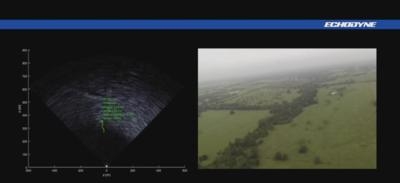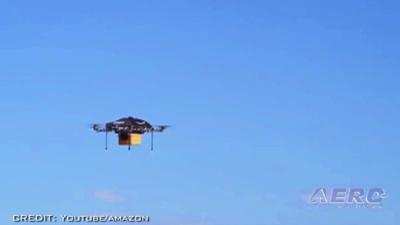Echodyne Corp Radar Flown On Multiple Octocopter Missions Below 400 Feet AGL
Echodyne Corp today announced the first ever successful test of an airborne Detect and Avoid (DAA) radar on a small Unmanned Aerial Vehicle (sUAV). Echodyne’s radar was mounted on a small commercial drone which flew multiple missions below 400’ over a period of several days. The drone was of a size, payload, and range well suited for package delivery, infrastructure inspection, and agricultural monitoring.

Echodyne’s detect and avoid technology enables a drone to ‘see’ moving and stationary obstacles using ‘radar vision’ as the drone flies through the airspace beyond line of sight of its operator. The radar tests were conducted with an undisclosed partner using Echodyne’s developer kit radar with its patented Metamaterial Electronically Scanning Array (MESA). Echodyne’s radar is based on metamaterials technology which enables the radar to deliver high-performance electronic scanning in a smaller, lighter and less expensive form factor than has been previously thought possible.
“It’s great to see our technology performing in real world field tests exactly as designed,” said Echodyne founder and CEO Eben Frankenberg. “We’ve made tremendous progress with our technology in a very short time and are excited to release our MESA-DAA radar into the market in just a few months. Tests like this show that advanced radar can be deployed directly on small commercial UAVs to ensure safe beyond line of sight drone operations. Unlike other sensor technologies such as cameras and LIDARs, radar provides accurate tracking of obstacles at long range across a broad field of view in all types of weather.”
During the testing missions, the radar successfully scanned a broad field of view in both azimuth and elevation (up to 120° x 80°) detecting and tracking multiple types of aircraft including a small UAV, a Beechcraft Bonanza, and an ultralight aircraft flying through its airspace. The radar provided a 4D data cube of radar returns accurately depicting ground vegetation, barbed wire fences and other stationary obstacles, as well as the flight paths of the tracked aircraft. The tests used Echodyne’s developer kit radar which is a precursor to its MESA-DAA radar, which will detect and track Cessna sized objects up to 3km away and small drones up to 750m away. MESA-DAA will be available to commercial customers in early 2017.

“This test brings us one step closer to fulfilling Echodyne’s mission to make the world a safer place by enabling cars, drones and other vehicles to sense the world around them,” said Tom Driscoll, PhD, founder and CTO of Echodyne. “Phased array radars have long been the pinnacle of radar technology, but they remain too costly for commercial use. MESA operates very similarly to a phased array, but at a tiny fraction of the cost, size, weight and power, making it ideal for all kinds of high performance commercial applications including radar vision for drones and cars.”
In the FAA’s recently issued rules for small UAV operation, all UAVs need to remain within visual line of sight of their pilot who is responsible for avoiding collisions. There is widespread acceptance that for UAVs to fly beyond line of sight of their operator, they will need DAA sensors and systems that safely replace the pilot’s “see and avoid” capability. And just like a pilot in a manned aircraft, any DAA system will need to detect and avoid both cooperative objects (e.g. those transmitting their position with a transponder) and non-cooperative objects (e.g. aircraft without transponders, birds, etc.); and do so reliably in a diverse range of weather conditions.
In its Aerospace Forecast, the FAA points out the importance of DAA to the long term success of the UAS industry, noting that “the overall demand for commercial UAS will soar once regulations more easily enable beyond visual line of sight operations and operations of multiple unmanned aircraft by a single pilot.”
(Top image from company video. Octocopter pictured in file photo. Not test aircraft)
 Airborne 05.10.24: Icon Auction, Drunk MedEvac Pilot, Bell ALFA
Airborne 05.10.24: Icon Auction, Drunk MedEvac Pilot, Bell ALFA ANN's Daily Aero-Term (05.13.24): ILS PRM Approach
ANN's Daily Aero-Term (05.13.24): ILS PRM Approach ANN's Daily Aero-Linx (05.13.24)
ANN's Daily Aero-Linx (05.13.24) Airborne-NextGen 05.07.24: AI-Piloted F-16, AgEagle, 1st 2 WorldView Sats
Airborne-NextGen 05.07.24: AI-Piloted F-16, AgEagle, 1st 2 WorldView Sats Airborne 05.08.24: Denali Update, Dad-Daughter Gyro, Lake SAIB
Airborne 05.08.24: Denali Update, Dad-Daughter Gyro, Lake SAIB




